Imagine gardening without the right tools. It would be like trying to cook a gourmet meal with just a fork. Having the essential gardening tools can make all the difference, especially for beginners.
You’ll learn about the must-have items that can transform your gardening experience. From gloves that protect your hands to pruning shears that make precise cuts, I’ll cover everything you need. Whether you’re dealing with a small backyard or a sprawling garden, these tools are worth the investment.
Ready to make gardening easier and more enjoyable? Keep reading to discover the tools that will turn your garden into a thriving oasis.
6 Key Takeaways on Essential Gardening Tools
- Before you buy gardening tools, think about what you need and the plants you want to grow.
- Some basic tools every gardener needs are gloves, pruning shears, loppers, a garden fork, a hand trowel, a spade, a rake, a hoe, a watering wand, and a watering can.
- If you’re more advanced, you might want extra tools. These include a hand fork, a garden hose, a rain barrel, a wheelbarrow, telescopic shears, a bow saw, a soil testing kit, and a garden auger drill bit.
- Luxury tools can make gardening more fun. These are lawnmowers, garden stools, composters, garden shredders, and electric hedge trimmers. They’re nice to have but not necessary.
- You can save money by using budget-friendly or DIY alternatives. For example, yogurt pots make great plant pots and egg cartons work well as seed trays.
- Starting with second-hand or cheap tools can help you get into gardening without spending too much.
Different Essential Gardening Tools
Gardening is so much easier with the right tools. No matter how big or small your garden is, these are worth the investment.
1. Gloves
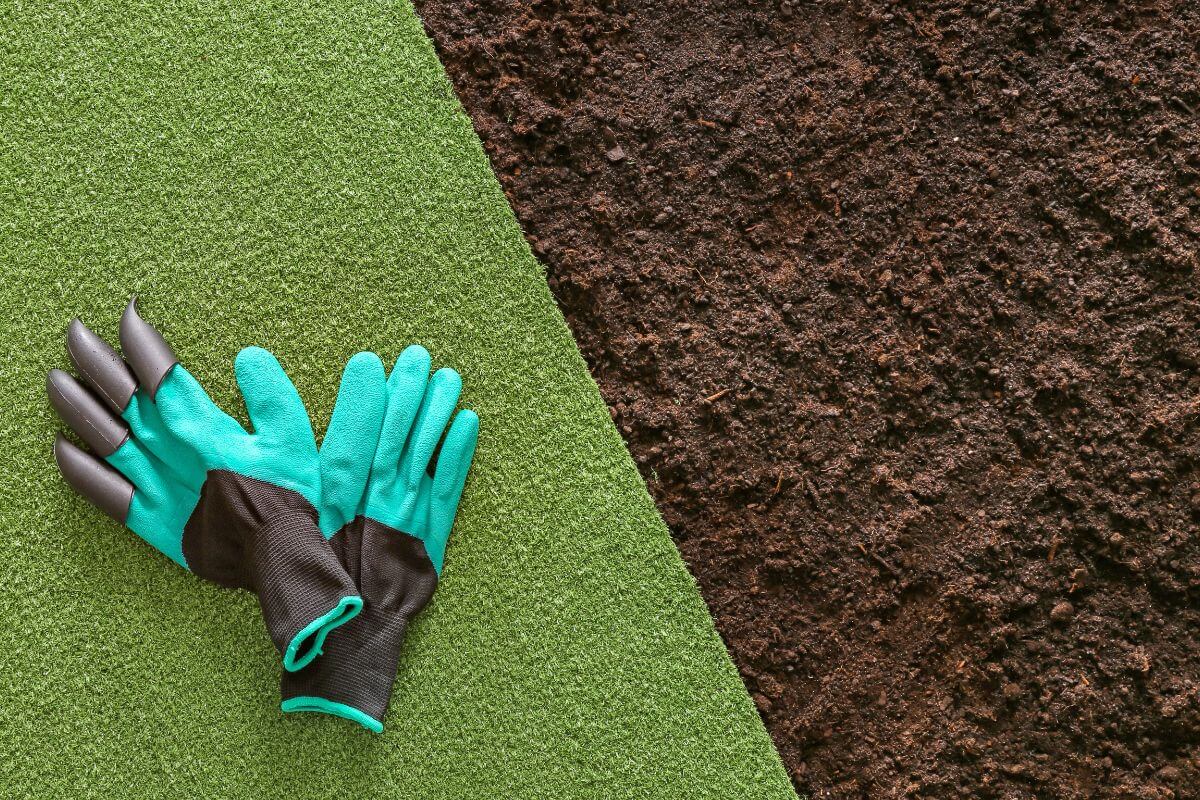
Gardening can be tough on your hands. That’s why I always reach for my trusty gloves before digging in. They’re like a shield against dirt, prickly thorns, and pesky plant irritants. Plus, they give me a better grip on my tools. No more slipping and sliding!
I’ve tried many gloves over the years. The key is finding a pair that feels good, lasts long, and fits just right. It’s like Goldilocks and the Three Bears – you want them not too loose, not too tight, but just perfect.
Here’s a quick rundown of what to look for in gardening gloves:
• Comfort – Should feel like a second skin
• Durability – Able to withstand rough work
• Fit – Snug but not restrictive
I like these from Amazon. You can use regular rubber gloves too, but they aren’t as thick or sturdy. You’ll need to replace them often.
2. Pruning Shears
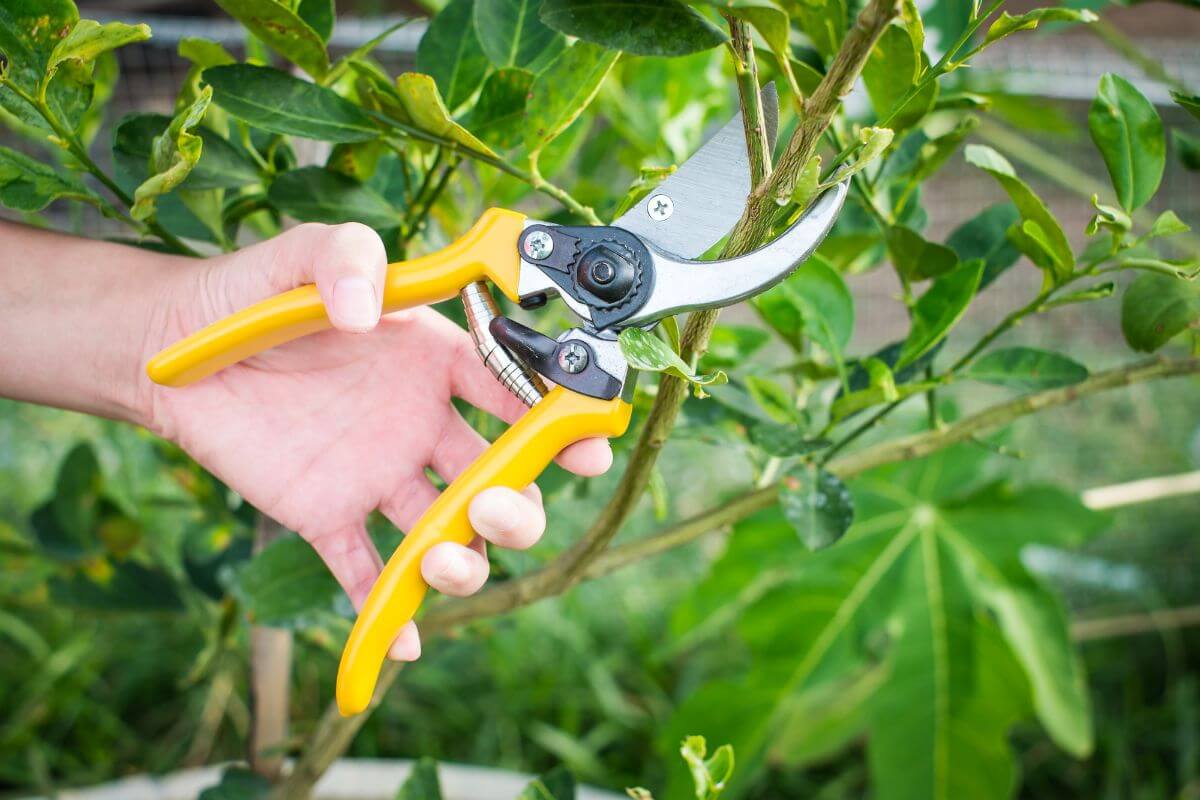
You might know them as secateurs, but these garden scissors are a must-have for precise cuts on small branches and stems. They work well for deadheading, harvesting produce, and shaping plants. Pick a pair that feels good in your hand and has sharp, bypass blades.
I suggest trying both Anvil and Bypass pruners. You can find them on Amazon. Anvil pruners cut through dead wood easily. Bypass pruners give clean cuts to live plants.
3. Loppers
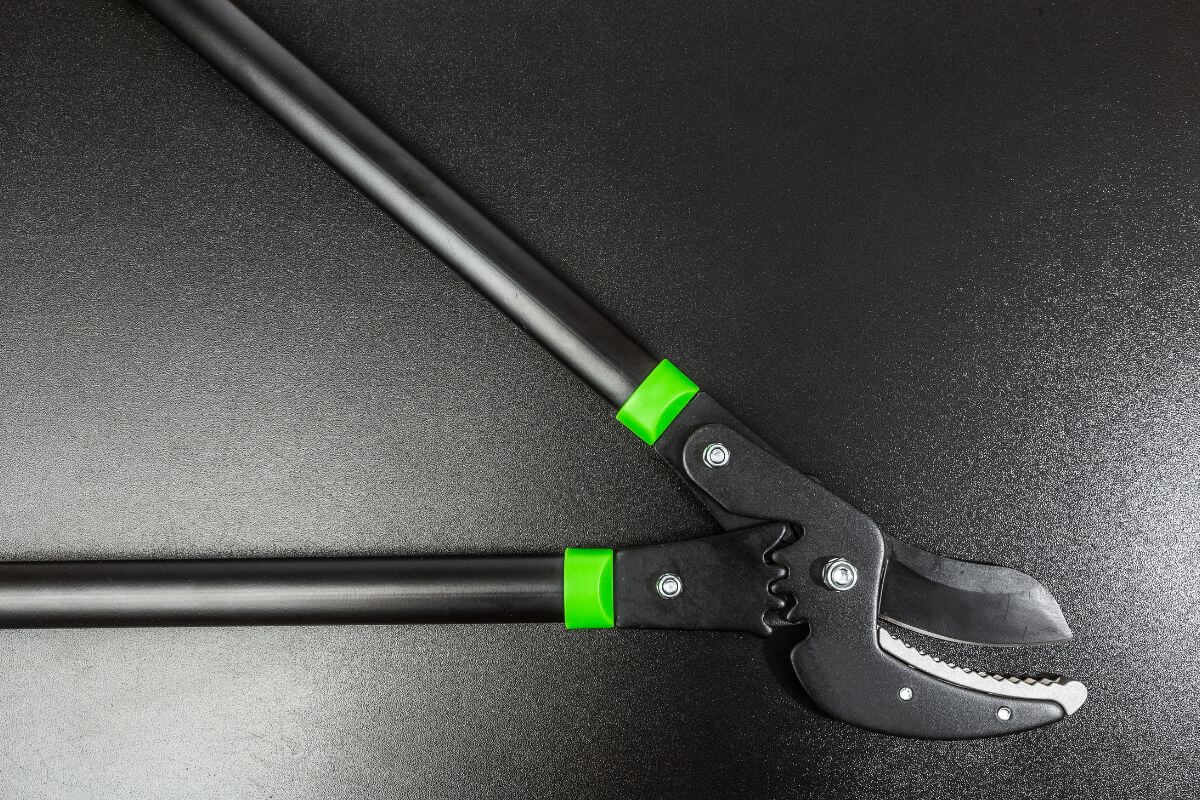
Ever tried cutting thick branches with regular pruning shears? It’s like trying to slice a watermelon with a butter knife. That’s where loppers come in handy. These bad boys are like the big brothers of pruning shears. They’ve got long handles that give you the oomph to tackle branches up to 2 inches thick.
Here’s a neat trick: look for loppers with telescoping handles. They’re like adjustable wrenches for your garden. You can extend them to reach those pesky high branches or shorten them for more control in tight spaces. It’s like having multiple tools in one!
I’ve got a pair of Fiskars 28″ loppers in my garden shed. They’re my go-to for tough pruning jobs. The brand’s solid reputation isn’t just hype — these loppers feel great in my hands and get the job done without a fuss.
4. Garden Fork
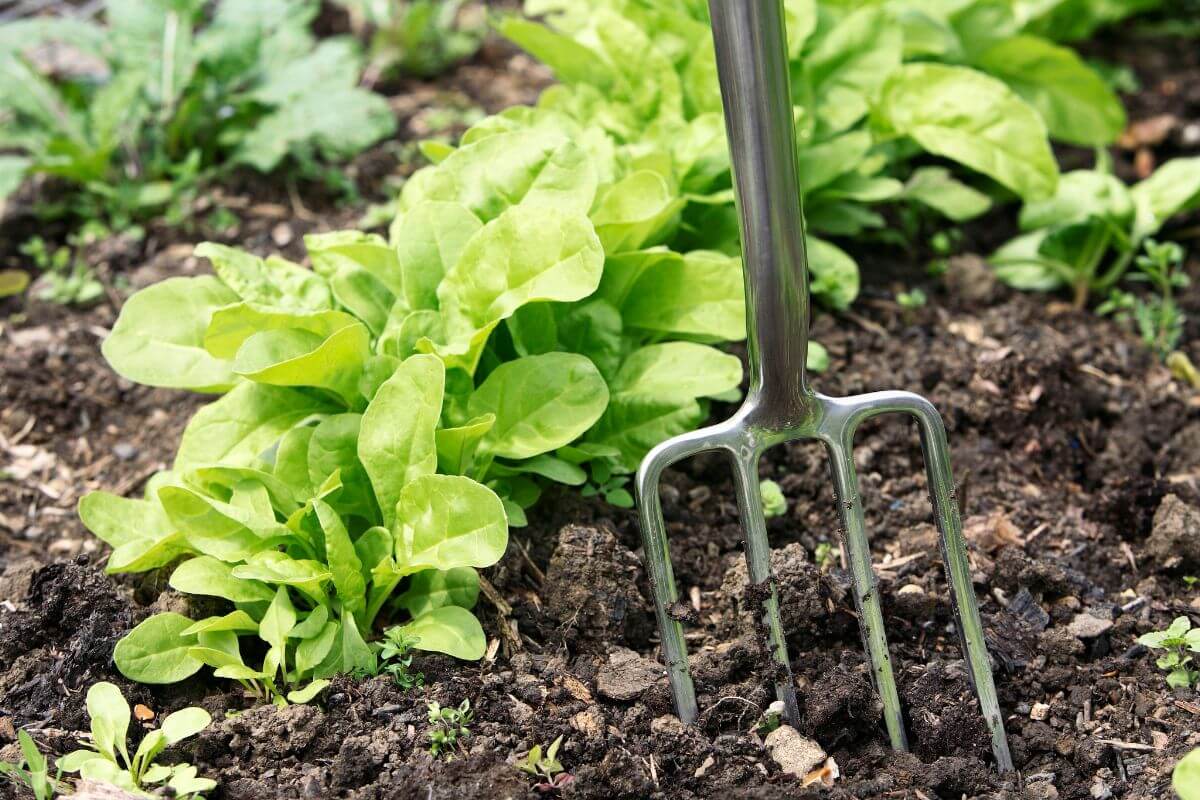
I’ve got my hands dirty with many garden forks over the years. Trust me, they’re a game-changer for your soil. You’ll love how easily they break up tough ground. It’s like magic!
Want to turn your soil into a fluffy dream? Grab a garden fork. Its strong tines dig deep and aerate like a champ. Plus, it’s perfect for unearthing those tasty root veggies.
Here’s a tip: Look for a fork with steel tines that curve slightly. And don’t forget a wooden handle – it feels great in your hands. I’ve found this combo works best for most garden tasks.
I’ve been using this awesome fork I bought online. It’s a workhorse in my garden. You can’t go wrong with it.
5. Hand Trowel
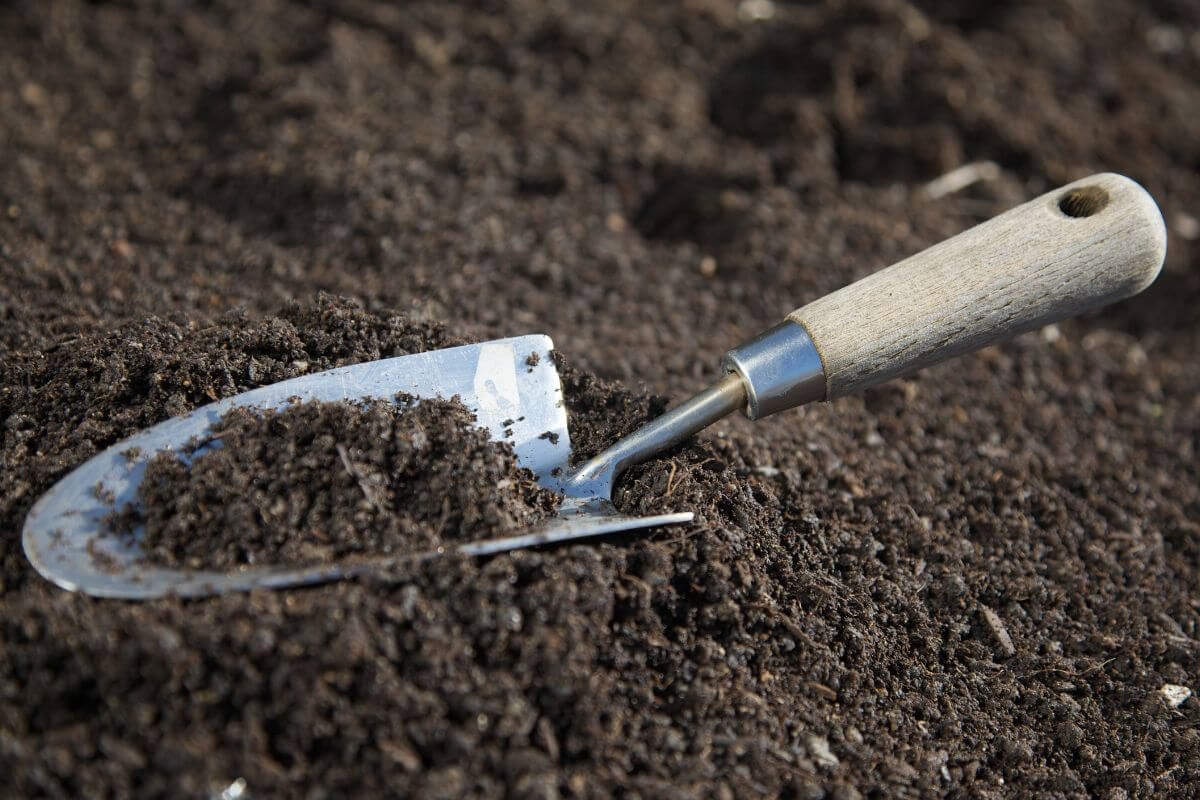
I love my trusty garden trowel. It’s a small but mighty tool that’s perfect for planting, moving plants, and pulling weeds in tight spots. You can even use it like a soil knife. Need to mix soil in your pots or raised beds? This little shovel’s got you covered.
When you’re shopping for a trowel, look for one with a comfy grip. Trust me, your hands will thank you after a long day in the garden. And make sure the blade is strong and won’t rust. Nobody wants a rusty trowel falling apart mid-dig!
I bought mine online and it’s been a game-changer. Have you tried using a trowel for your gardening tasks? What’s your go-to tool for small planting jobs?
6. Spade
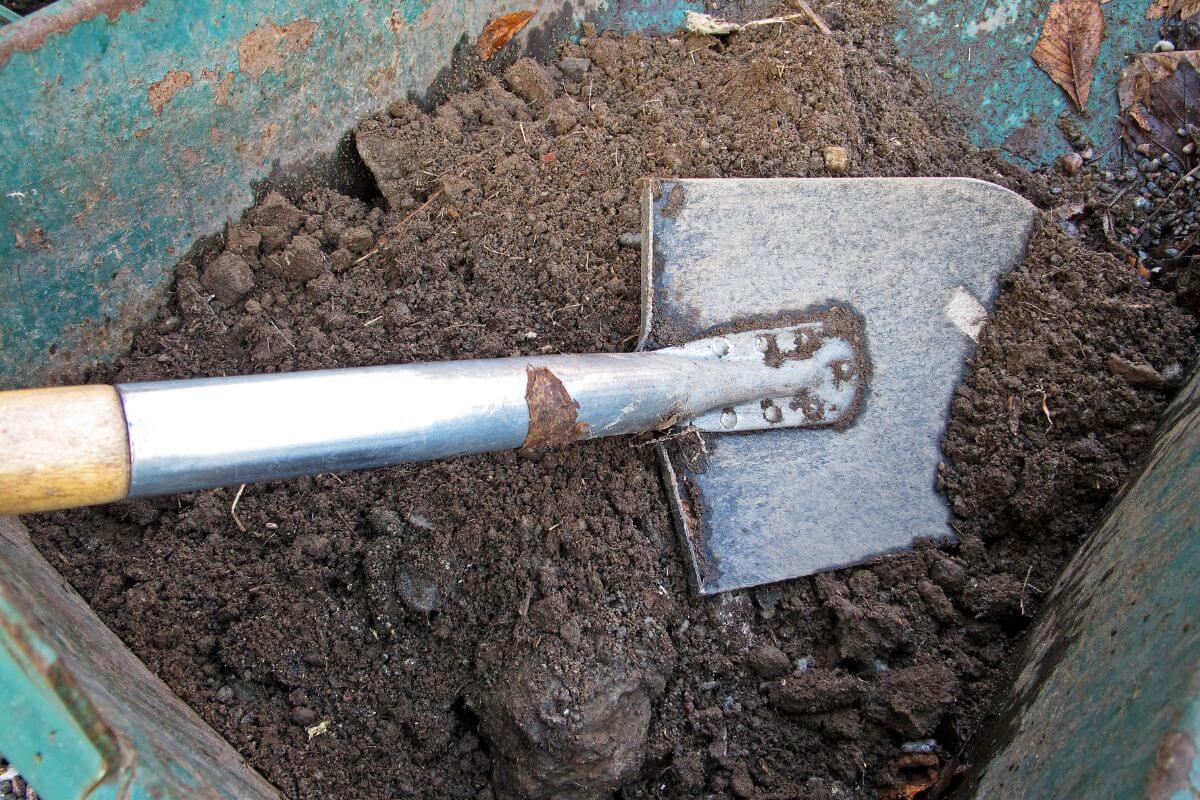
A garden spade is essential for digging holes, edging, and moving soil. Unlike a shovel, it has a flat blade that’s ideal for creating clean edges and straight-sided holes. Choose a spade with a sturdy handle and a sharp, rust-resistant blade.
You can purchase a spade online (this one is particularly good), but you may want to get one from a store, so you can try it before you buy. At least get one in your hands in the store for height and then purchase it online.
7. Rake

A trusty metal rake is your garden’s best friend. You’ll use it for all sorts of jobs, from cleaning up fallen leaves to smoothing out soil and spreading mulch. While there are special rakes for different tasks, a basic leaf rake will do the trick for most folks.
Want to pick the right rake? Look for these features:
• Flexible tines that bend without breaking
• A handle that feels good in your hands
• Sturdy construction to last many seasons
I’ve found that a well-made rake can make yard work almost enjoyable. The satisfying scrape of tines through crisp autumn leaves or the gentle pat-pat as you level out a flower bed – it’s oddly soothing.
8. Hoe
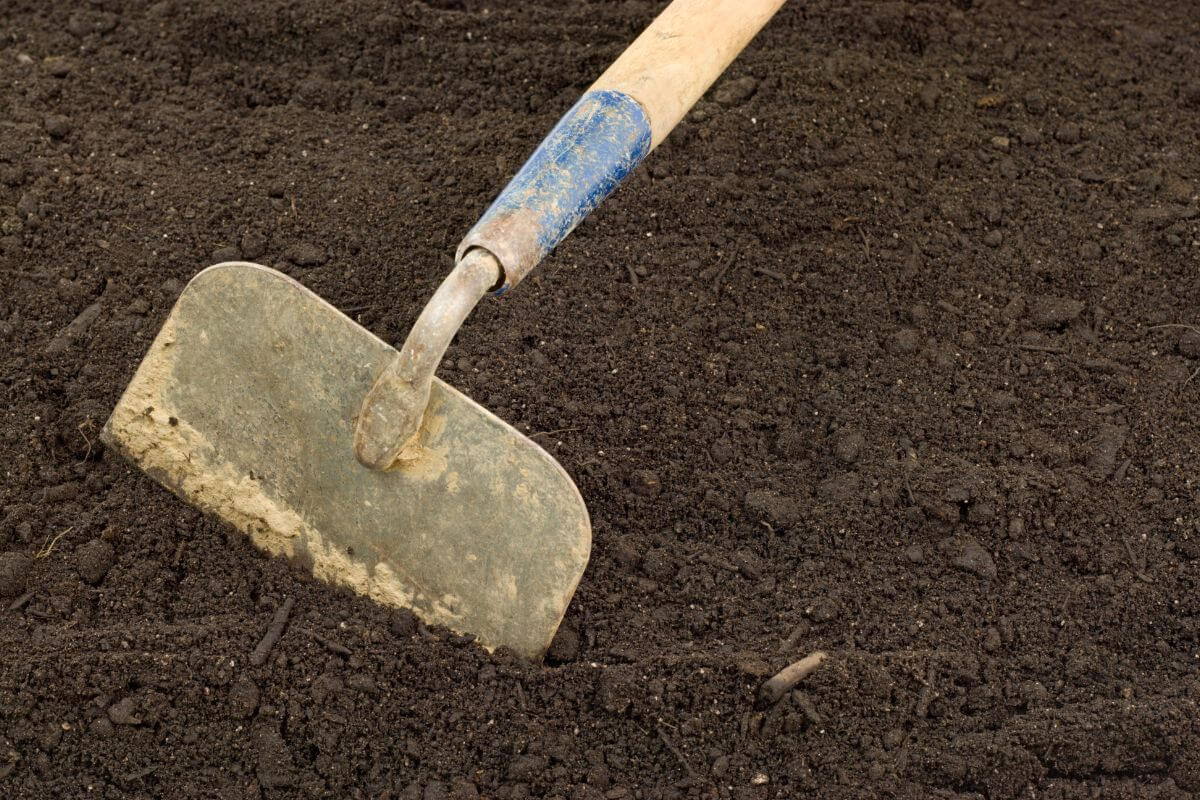
A hoe is a real game-changer for tackling weeds and prepping soil. You’ll find it super handy for bigger garden spaces too. When picking one out, go for a sharp blade. It makes all the difference. And don’t forget to check the handle length. You want it to fit you just right so you’re not hunching over.
I’ve tried a bunch of hoes over the years. Want to know my favorite? It’s this sturdy one I found online. It’s been my go-to for ages now.
Here’s a quick rundown of what a hoe can do for you:
• Kick those pesky weeds to the curb
• Fluff up your soil like a pro
• Create neat rows for planting
9. Watering Can
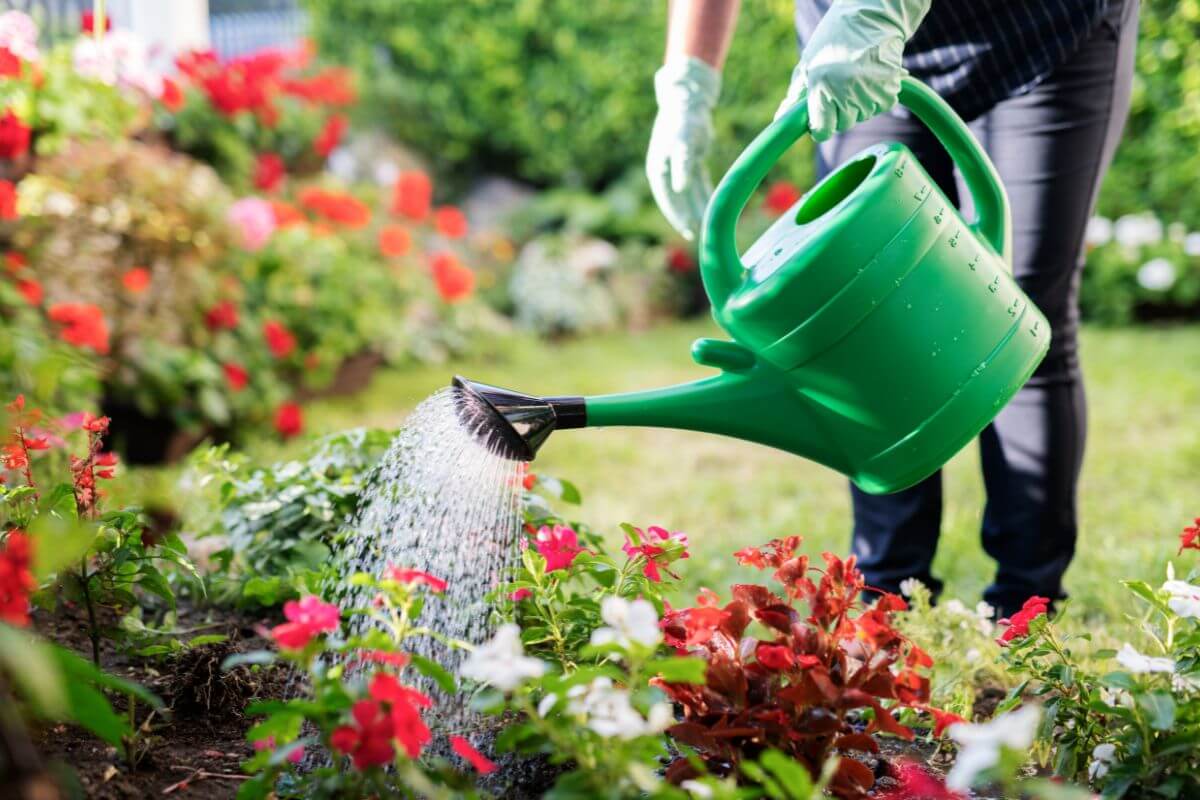
A watering can is perfect for precise watering of container plants and seedlings. It’s also useful for applying liquid fertilizers. Choose a can with a capacity that suits your needs and a rose (sprinkler head) for even water distribution.
Get an easy-to-use, good-looking watering can like this one online.
Advanced Garden Tools
If you’re already into gardening, or you just want to get a bit more serious about it, these tools will help you advance as a gardener.
1. Hand Fork
A hand fork is essential for precision work, such as:
- Removing stubborn weeds
- Breaking up small areas of compacted soil
- Aerating around delicate plants
While often sold in sets with hand trowels, it’s worth investing in a high-quality tool, and ergonomic hand fork separately. Look for one with sturdy tines and a comfortable grip.
This hand fork is what I use and can be found online.
2. Garden Hose and Spray Nozzle
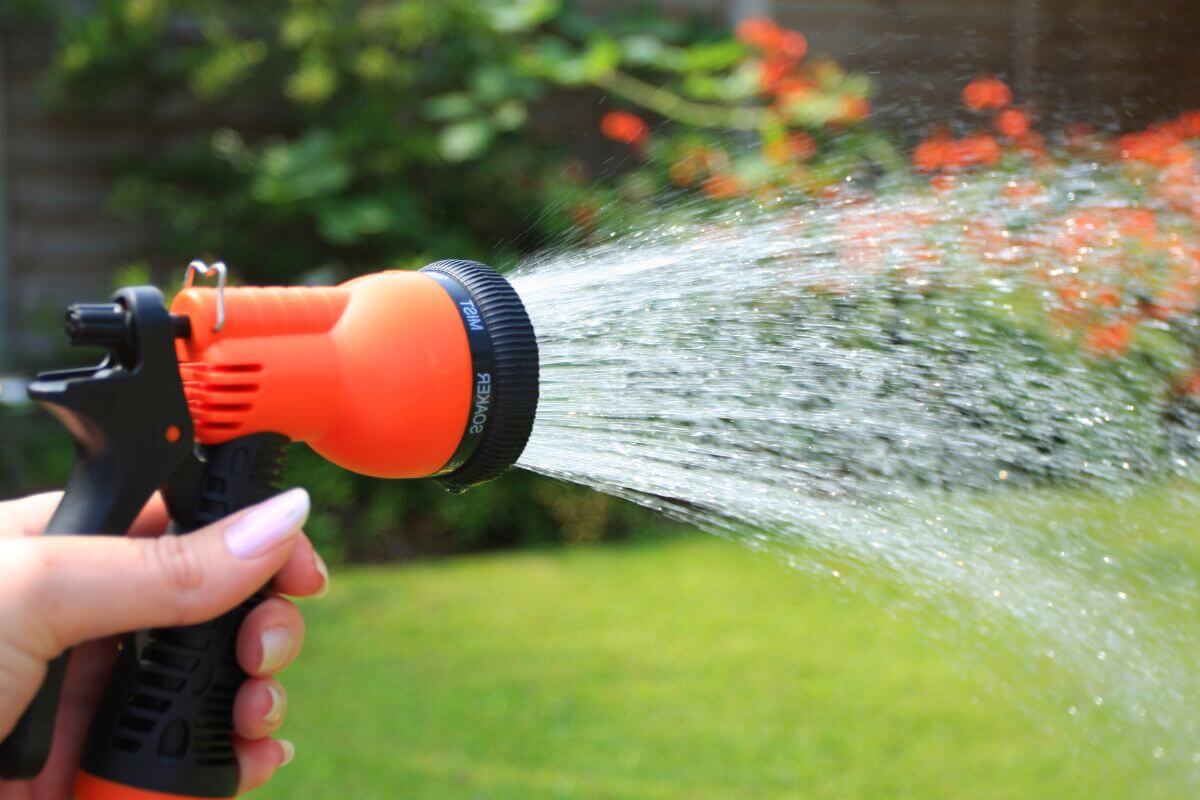
Upgrade your watering routine with a robust garden hose and adjustable spray nozzle. Benefits include:
- Efficient watering of large areas
- Precise control over water pressure and spray patterns
- Easier reach for hanging baskets and elevated planters
Consider investing in an expandable hose for easier storage and a nozzle with multiple spray settings for your garden bed.
The best type is one like this with a spray nozzle.
3. Rain Collection Barrel
Harvesting rainwater is both eco-friendly and beneficial for your plants. A rain barrel:
- Provides chemical-free water for your garden
- Reduces water bills
- Helps manage stormwater runoff
Look for models with overflow protection and mosquito-proof screens. Some modern designs are aesthetically pleasing and can blend with your garden decor.
You can get hard-sided barrels, but I like this one as it’s collapsible and portable.
4. Wheelbarrow
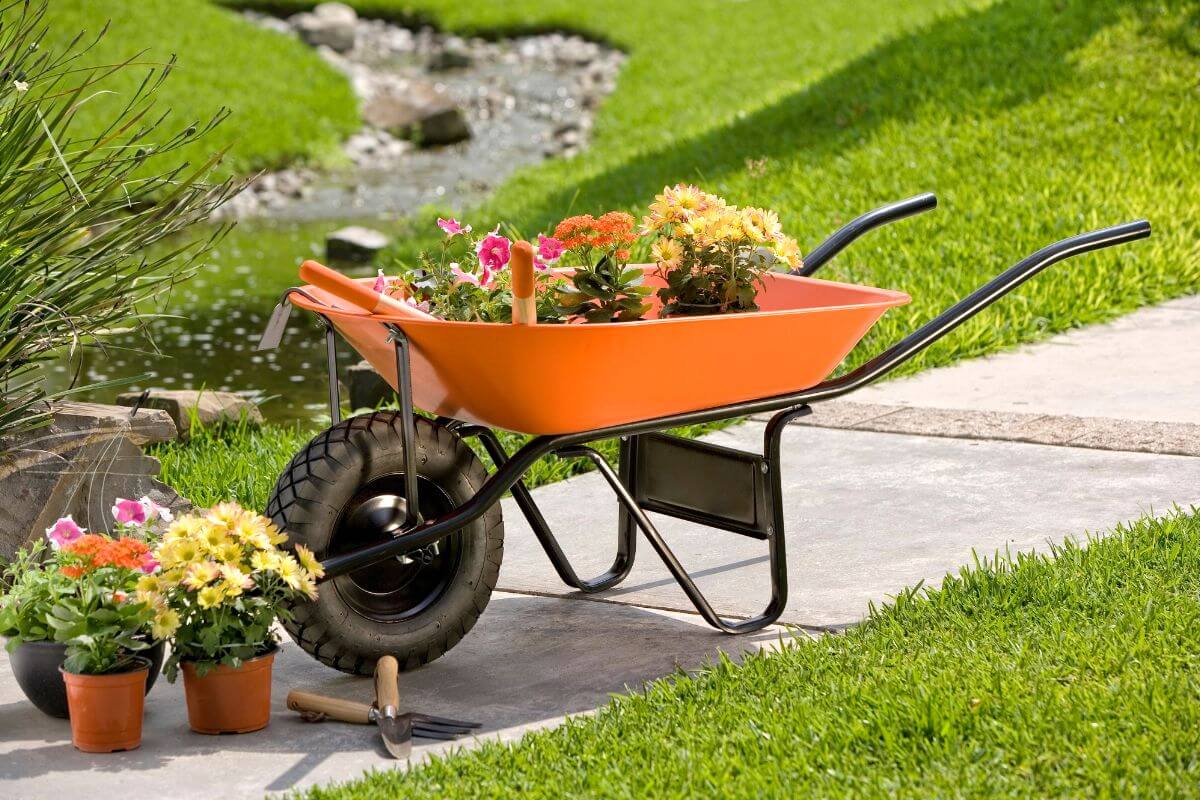
A sturdy wheelbarrow is great for the following garden tasks:
- Transporting heavy loads of soil, compost, or mulch
- Moving plants, rocks, or garden debris
- Mixing soil or compost
When choosing a wheelbarrow, consider the material (plastic is lighter, metal is more durable), the number of wheels (two-wheel models offer more stability), and its weight capacity.
While there are cheaper ones on the market, this one is good if you have the space.
5. Telescopic Garden Shears
For maintaining tall hedges, shrubs, and tree branches, telescopic shears are a game-changer. They offer:
- Extended reach without ladders
- Adjustable length for various tasks
- Less strain on your back and arms
Look for models with non-slip grips and lightweight yet durable materials like aluminum or carbon fiber.
I love these telescoping ones online as they are so versatile. Large shears will also come in handy for cutting up large amounts of garden waste.
6. Bow Saw
A bow saw is crucial for larger pruning jobs and small tree removal. Key features to consider:
- Blade length (typically 21-30 inches)
- Tooth design (raker teeth for green wood, peg teeth for dry wood)
- Ergonomic handle design
Always prioritize safety by wearing gloves and eye protection when using a bow saw.
This one with a pointed nose is perfect for getting in between branches.
7. Soil Testing Kit
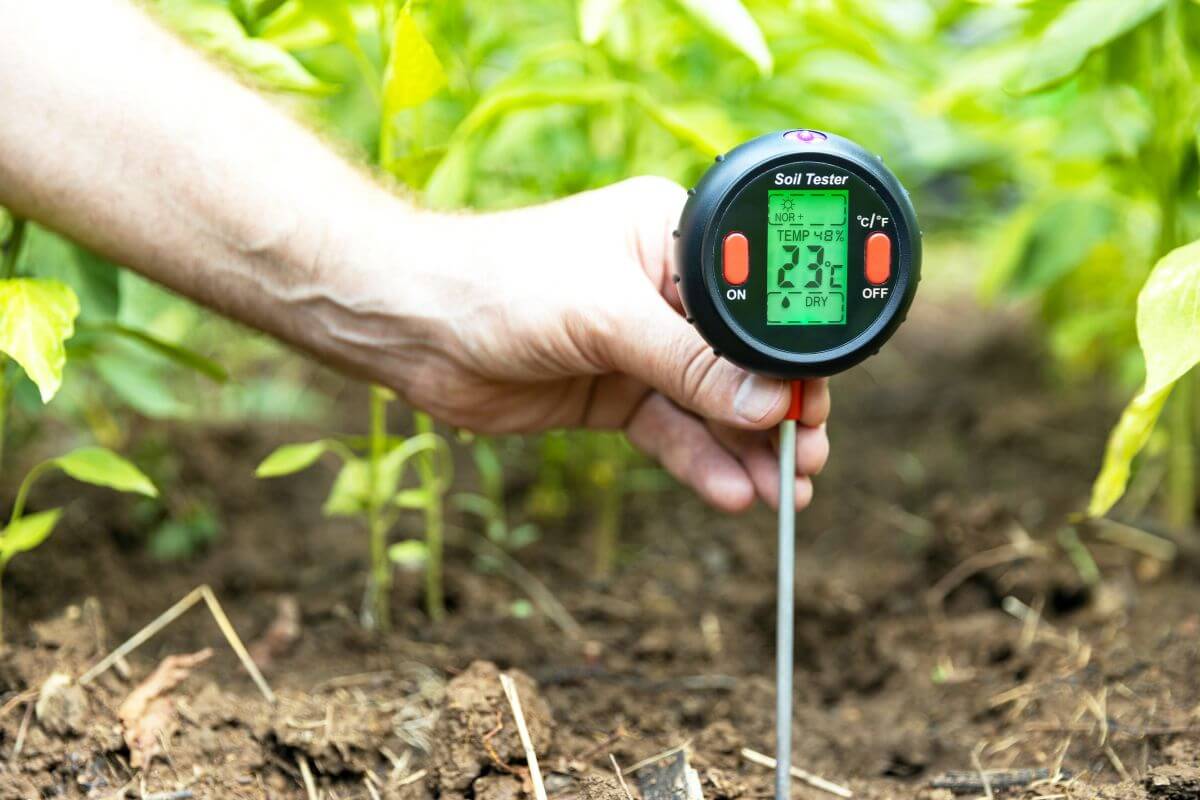
To truly advance your gardening skills, understanding your soil is crucial. A comprehensive soil testing kit allows you to:
- Determine soil pH levels
- Assess nutrient content (N-P-K)
- Make informed decisions about amendments and fertilizers
Consider both DIY kits and professional lab testing services for the most accurate results.
You can buy this one online here:
8. Garden Auger Drill Bit
For efficient planting of bulbs or creating holes for posts, a garden auger drill bit is invaluable. It:
- Attaches to most power drills
- Creates uniform holes quickly
- Reduces physical strain compared to manual digging
Choose a size appropriate for your most common planting needs, typically 1.6 to 3 inches in diameter.
I use this Garden Auger Drill Bit on Amazon because it efficiently creates uniform holes for planting and reduces physical strain compared to manual digging.
9. Watering Wand
A watering wand extends your reach, making it easier to water hanging baskets, tall plants, and hard-to-reach areas. It also provides a gentle shower that won’t damage delicate plants. Look for one with multiple spray patterns and a comfortable grip.
I recommend this watering wand on Amazon because it provides a gentle, even spray.
Luxury Garden Tools
This section is dedicated to tools that are by no means essential, but are still useful if you have the money and the space!
1. Lawn Mower
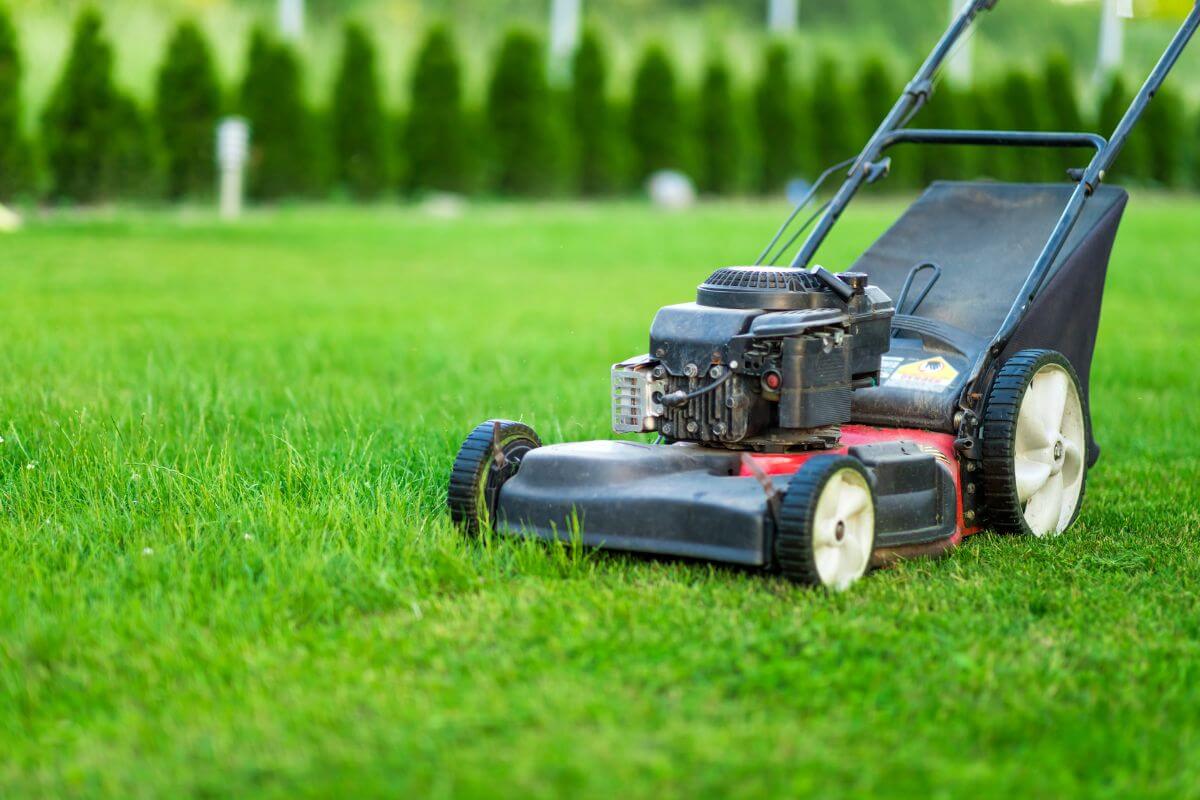
While some consider a lawn mower essential, you can actually live without one. A wild lawn benefits the ecosystem, and there are no-mow options like chamomile or moss lawns for a tidy look. However, if you prefer short, neat grass, consider a robot mower for hands-free care or an electric cordless mower like this one:
2. Garden Stool
If you spend a lot of time kneeling in your garden, a sturdy and comfortable gardening stool can be a game-changer. It eases pressure on your knees and often comes with pockets for keeping tools organized.
As well as easing pressure on your knees, this one has pockets to keep your tools neat and tidy.
3. Composter
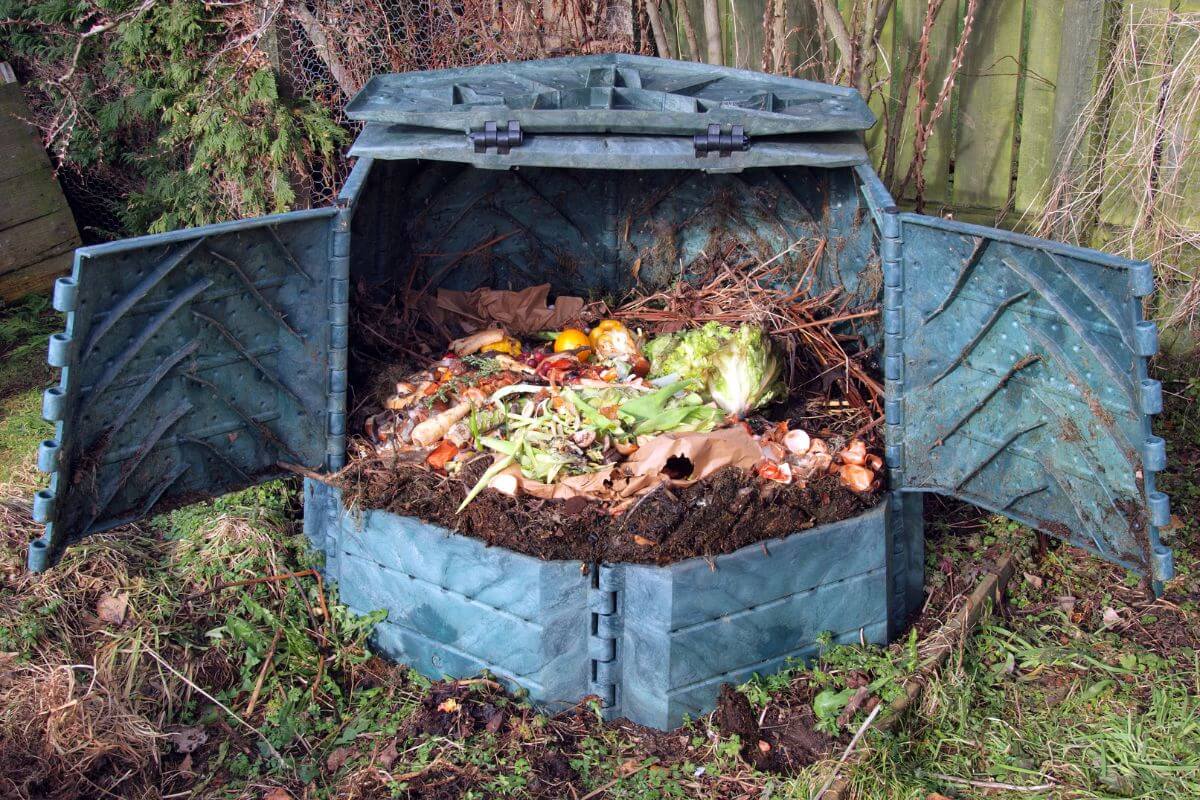
While composting is crucial for gardening, a store-bought composter is a luxury. There are many types available, depending on your needs. A compost tumbler, for example, can make the process quick and easy.
This compost tumbler can be found online and makes composting quick and easy.
4. Garden Shredder
A garden shredder pairs well with a composter, speeding up the decomposition process. You can choose between shredders for green materials or wood chippers for brown materials. A wood chipper is often more useful, as green materials break down quickly on their own.
You can get shredders like this one for green materials, or wood chippers like this one online for brown materials.
5. Electric Hedge Trimmer
Electric hedge trimmers are convenient for maintaining hedges without bending over. However, they’re only necessary if you have hedges to keep trim. Some gardeners prefer hand clippers for certain types of hedges. If you need one, consider a cordless trimmer for added convenience.
You won’t need a hedge trimmer unless you have a hedge to keep trim and tidy. If you do need one I recommend this cordless trimmer that’s popular online.
Remember, these tools are luxuries. While they can make gardening easier, they’re not essential for maintaining a beautiful garden.
6. Chipper Shredder
A chipper shredder is more of a luxury than a necessity, especially for beginner gardeners. While it can help turn garden waste into mulch or compost, it’s not essential for gardening success.
Basic hand tools and simple composting methods usually suffice for beginners. Prunings and small branches can be cut manually or left to decompose naturally, while leaves and soft plant matter can be composted in a simple bin or pile.
I do own one personally and I can say that it is quite an efficient tool, especially for the large amount of branches I work with in my garden. Here is one that I recommend from Amazon:
- Discover more in our list of Best Chipper Shredders for Gardeners
Essential Gardening Tools Final Thoughts
Gardening offers so many tools that it’s easy to miss a few. If you face a problem while gardening, there’s probably a tool to solve it.
I didn’t list obvious items like plant pots or seed trays. You can improvise if needed. For example, yogurt pots work well as temporary plant pots. Egg cartons make great seed trays.
One tool that’s growing in popularity is Plant Identification Apps. You can take pictures of plants and the app will tell you what they are. It even offers care and growth guides.
I hope this list helps you know what you need to become a good gardener.
Don’t worry about costs. You can find cheap gardening items and start with second-hand equipment.
All you need to start gardening is some dirt and a positive mindset. Happy gardening!
Check out these helpful guides to help you on your gardening journey:

















![[Upgraded] Soil Moisture Meter, 4-in-1 Soil pH Tester, Moisture/Light/Nutrients/pH Meter](https://m.media-amazon.com/images/I/61cKBVKSRCL.__AC_SL500_QL70_ML2_.jpg)








